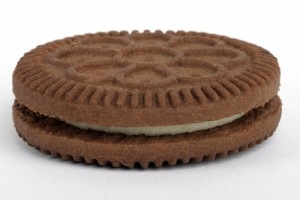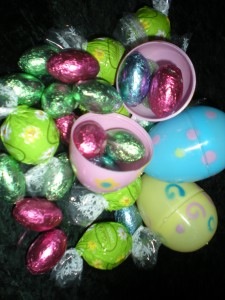Not Hungry To Hungry In No Time Flat
How can it be that you’re sitting in your house at about 9PM, nice and content from a good dinner. You’re satisfied and not hungry. Whoops, hold the phone. An ad comes on television for a fast food burger topped with melted cheese and bacon. Really crispy French fries tag along and so does a strawberry milkshake. Bingo. You are hungry and cannot get the thought of that burger, shake, and fries out of your head. (If we really looked into this, your hunger might be head hunger not stomach hunger.) It’s a bit of I want what I want and I want it now syndrome.
Can An Ad Change Your Eating?
Can food ads really change the way you eat? You bet they can – or a whole lot of multi-million dollar advertising campaigns wouldn’t exist.
According to the Rudd Center for Food Policy and Obesity at Yale, there’s no doubt that food marketing affects eating behavior. Continued exposure to many ads over time stimulates your desire for what’s being touted. They found that the foods that are advertised the most are what people say they like and buy the most. That wouldn’t be so bad if the marketing efforts were for healthy foods instead of junk – or, to be a little nicer, food of lesser nutritional quality.
What Is The Norm?
Advertising psychologically affects what you think is the norm. The visual and emotional effects of TV advertising, along with a story line and music, really gets to you — especially when you’re tired and plopped down in front of the TV. Your ability to control your impulses is decreased.
There’s more:
- Advertising affects your preference for various categories of food.
- When you see more fast food commercials you want to eat more fast food than people who don’t see as many commercials.
- People who are exposed to food ads end up eating more food overall.
- When people see an ad before tasting a food they like the taste of that food more.
- Food marketing affects what might be considered “typical behavior,” for instance, when people see fast food ads and then believe that their neighbors eat fast food more frequently than they do.
What’s The Message (Is It Good Or Bad)?
Food marketers have a lot of power. The tricky thing is to harness that power for a good purpose rather than for hawking nutritionally poor food with a large caloric bang for the buck. Unfortunately, the majority of ads tip the unhealthy end of the scale by advertising fast food, drinks, and snacks often accompanied by unhealthy eating messages such as young men should eat big portions of meat so they “eat like men” and that it’s a good idea to have a “fourth meal of the day” (sweetened cereal at night springs to mind).
Kid Stuff
Kids are impressionable and for them, food marketing packs a very powerful punch. A recent study (2/10) in the American Journal of Public Health showed that childhood obesity is directly related to children’s exposure to commercials that advertise unhealthy foods.
According to Rudd, the average child sees 15 food commercials each day. It takes only one commercial to make them want a particular food. Grocery store marketing takes direct aim at kids with TV characters on packages and shelf displays at their eye level. The internet is jam packed with food marketing on children’s websites and with online games that feature food products within the game.
Fortunately, there is an Interagency Working Group on Food Marketed to Children which will make food marketing recommendations to Congress this summer, and the Center for Science in the Public Interest has developed “Guidelines for Responsible Food Marketing to Children” (www.cspinet.org).
SocialDieter Tip:
Food marketing is everywhere – and it affects your eating behavior. Be aware that it’s going to get to you – if you let it. Try to cut down your exposure. It’s insidious so heads up. Don’t be taken in. Some of it is up front – like TV commercials –and some isn’t – like product placement in television shows and the movies. How can you not crave a fast food burger and fries or a glazed donut when you watch your favorite character happily munching away? The thought gets in your head and it just yanks your chain until you raid the fridge or head out to grab whatever it is that advertising has successfully planted. Steer clear of the commercials or have diversionary tactics or food. 96% fat free microwave popcorn, Skinny Cow ice cream cones or cups, fruit, 100 calorie English muffins with fat free or low fat cream cheese and all fruit or sugar free jam are some suggestions for reasonable calorie controlled snacks. Or, take the dog for a walk – just stay away from the corner deli.
Don’t swallow what an ad is preaching (and trying to sell). Inform yourself about your choices – check out the nutritional content by going online and reading labels. Give yourself license to make healthy picks – in restaurants and in the supermarket. The choice of what you eat is yours – not the food company’s or the ad agency’s.




